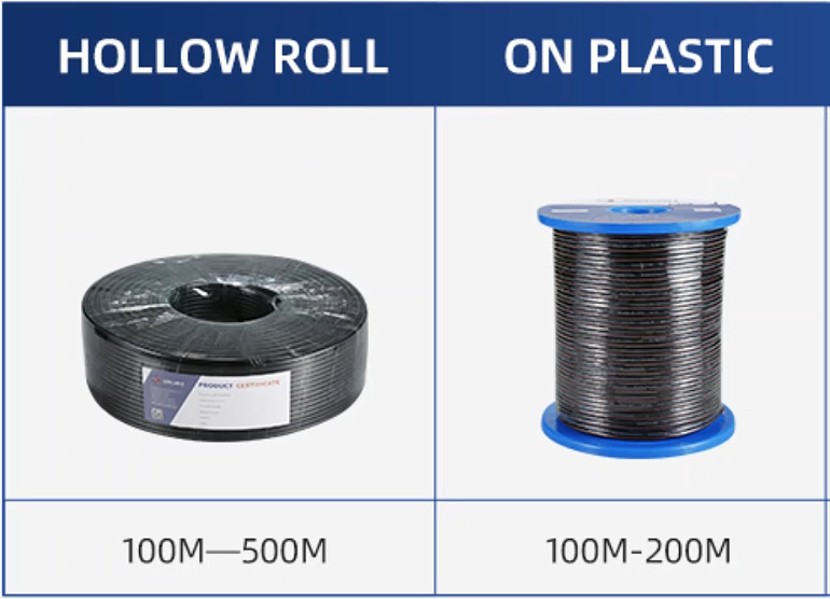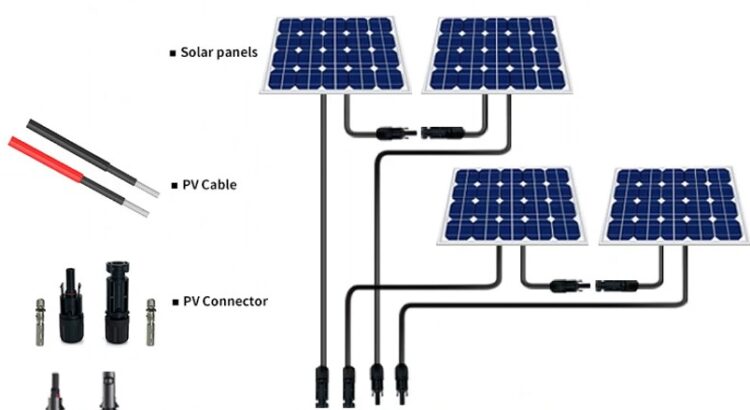Solar power stands out as a beacon of sustainable progress. As solar energy continues to gain traction worldwide, the infrastructure supporting its transmission and distribution plays a pivotal role. Among these components, the humble yet essential PV cable, particularly the solar cable 6mm2, emerges as a crucial link in the solar power chain.
Unveiling the PV Cable: Backbone of Solar Energy Systems
Before delving into the specifics of the rating of a 6mm2 solar cable, it’s paramount to grasp the significance of PV cables in solar energy systems. PV cables, short for photovoltaic cables, serve as the conduit for transmitting electricity generated by solar panels to various components within a solar power system. These cables must be robust, efficient, and capable of withstanding the rigors of outdoor environments, making them indispensable in solar installations.
The Evolution of Solar Cable 6mm2: Adapting to Growing Needs
Within the realm of PV cables, the 6mm2 solar cable holds a prominent position. The “6mm2” designation refers to the cross-sectional area of the cable, indicating its capacity to carry current. Over the years, the design and composition of these cables have evolved in tandem with advancements in solar technology and industry standards.
Rating of 6mm2 Solar Cable: Understanding its Significance
The rating of a 6mm2 solar cable encompasses several crucial parameters that determine its performance and suitability for specific applications. These ratings provide valuable insights into the cable’s electrical capabilities, mechanical durability, and environmental resilience.
Current Carrying Capacity: A Key Aspect
One of the primary considerations in the rating of a 6mm2 solar cable is its current carrying capacity. This metric denotes the maximum amount of electrical current that the cable can safely conduct without overheating or sustaining damage. The current carrying capacity depends on factors such as the cable’s material, construction, and operating conditions.
For a 6mm2 solar cable, the current carrying capacity typically ranges from 32 to 45 amperes, depending on factors such as insulation type and ambient temperature. This rating ensures that the cable can efficiently transmit the electrical output generated by solar panels without experiencing excessive resistance or voltage drops.

Voltage Rating: Safeguarding Against Overload
In addition to current carrying capacity, the voltage rating of a 6mm2 solar cable is a critical parameter to consider. This rating specifies the maximum voltage that the cable can withstand safely, protecting against insulation breakdown and electrical hazards.
Most 6mm2 solar cables are rated for voltages ranging from 600 to 1000 volts, ensuring compatibility with standard solar photovoltaic systems. Adhering to the prescribed voltage rating is essential for maintaining the integrity and safety of the solar power infrastructure.
Temperature Resistance: Endurance Under Heat
Solar installations are often subjected to fluctuating temperatures and environmental extremes, necessitating cables capable of withstanding such conditions. The temperature resistance rating of a 6mm2 solar cable denotes its ability to maintain performance and structural integrity across a wide range of temperatures.
High-quality 6mm2 solar cables feature temperature ratings exceeding 90°C, ensuring reliability even in hot climates or during periods of peak solar irradiance. This resilience to temperature variations enhances the longevity and efficiency of solar power systems, minimizing downtime and maintenance costs.
UV Resistance: Guarding Against Photodegradation
Exposure to ultraviolet (UV) radiation poses a significant challenge for outdoor solar installations, as it can cause degradation and deterioration of cable insulation over time. UV-resistant 6mm2 solar cables incorporate specialized materials and coatings to mitigate the effects of prolonged sun exposure.
By integrating UV-resistant properties into their design, these cables maintain their structural integrity and electrical performance over extended periods, safeguarding the reliability and longevity of solar energy systems in outdoor environments.
Flexibility and Durability: Essential Traits
Beyond electrical specifications, the rating of a 6mm2 solar cable also encompasses its mechanical properties, including flexibility and durability. Flexible cables facilitate easier installation and routing, especially in complex solar arrays or confined spaces.
Moreover, durability is paramount, as solar cables must withstand mechanical stress, abrasion, and environmental factors without compromising performance. Premium-grade 6mm2 solar cables feature robust construction and protective layers to enhance durability and resilience in challenging operating conditions.
Compliance with Industry Standards: Ensuring Quality and Safety
In the realm of solar energy, adherence to established industry standards is paramount to ensure the quality, safety, and reliability of PV cables. Manufacturers of 6mm2 solar cables must comply with relevant standards and certifications, such as those set forth by organizations like the International Electrotechnical Commission (IEC) and Underwriters Laboratories (UL).
By adhering to rigorous quality control measures and certification requirements, solar cable manufacturers instill confidence in the performance and safety of their products, fostering trust among installers, project developers, and end-users alike.
Conclusion: Empowering Solar Energy Infrastructure
In conclusion, the rating of a 6mm2 solar cable encompasses various technical parameters that collectively determine its suitability and performance in solar power applications. From current carrying capacity and voltage rating to temperature resistance and UV resilience, these cables undergo meticulous design and testing to meet the demands of modern solar installations.
As solar energy continues to proliferate as a clean and sustainable source of power, the role of high-quality PV cables, including the versatile 6mm2 solar cable, becomes increasingly indispensable. By powering the backbone of solar energy infrastructure, these cables contribute to the realization of a greener and more sustainable future for generations to come.





